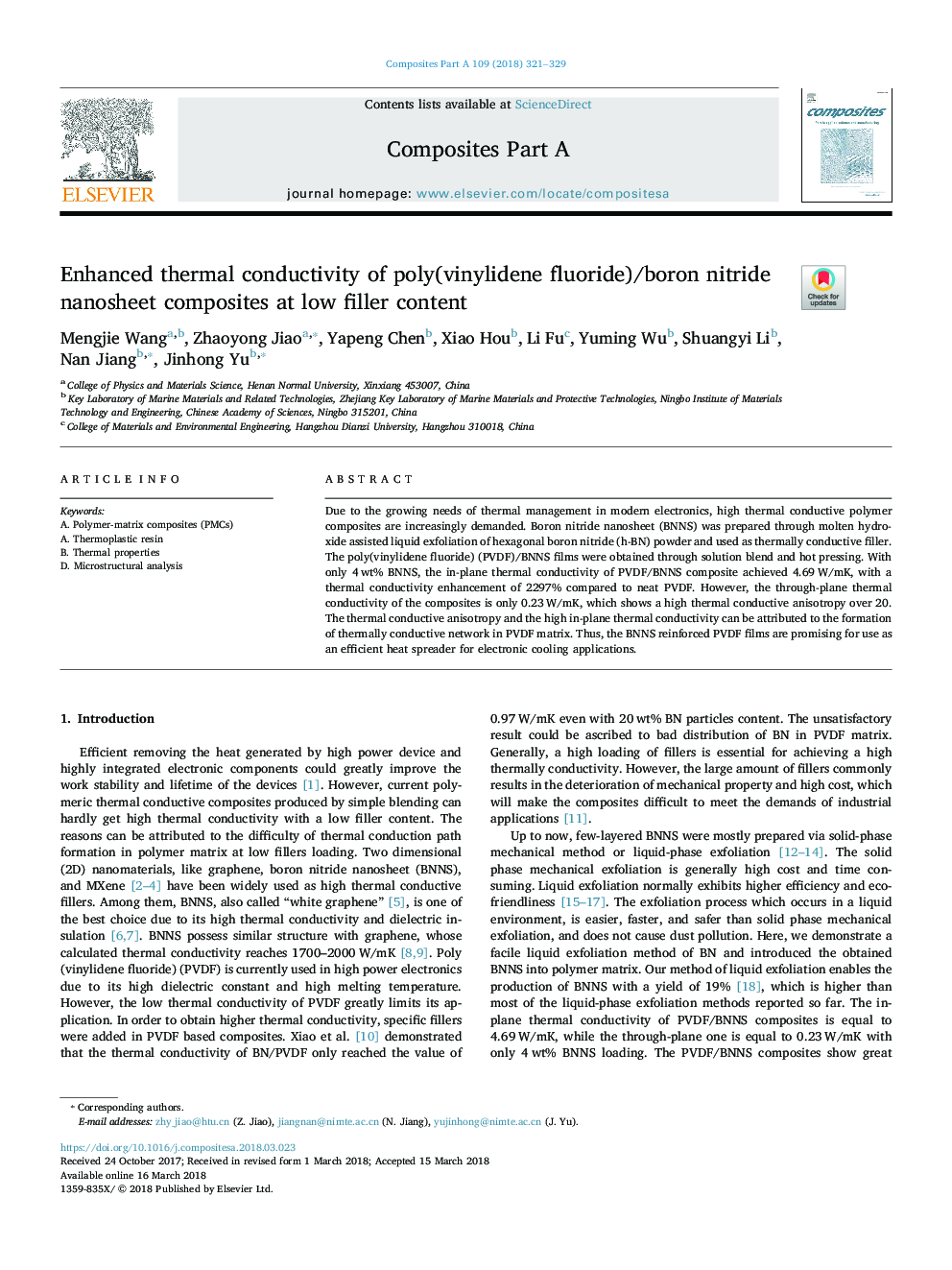| Article ID | Journal | Published Year | Pages | File Type |
|---|---|---|---|---|
| 7889671 | Composites Part A: Applied Science and Manufacturing | 2018 | 9 Pages |
Abstract
Due to the growing needs of thermal management in modern electronics, high thermal conductive polymer composites are increasingly demanded. Boron nitride nanosheet (BNNS) was prepared through molten hydroxide assisted liquid exfoliation of hexagonal boron nitride (h-BN) powder and used as thermally conductive filler. The poly(vinylidene fluoride) (PVDF)/BNNS films were obtained through solution blend and hot pressing. With only 4â¯wt% BNNS, the in-plane thermal conductivity of PVDF/BNNS composite achieved 4.69â¯W/mK, with a thermal conductivity enhancement of 2297% compared to neat PVDF. However, the through-plane thermal conductivity of the composites is only 0.23â¯W/mK, which shows a high thermal conductive anisotropy over 20. The thermal conductive anisotropy and the high in-plane thermal conductivity can be attributed to the formation of thermally conductive network in PVDF matrix. Thus, the BNNS reinforced PVDF films are promising for use as an efficient heat spreader for electronic cooling applications.
Keywords
Related Topics
Physical Sciences and Engineering
Materials Science
Ceramics and Composites
Authors
Mengjie Wang, Zhaoyong Jiao, Yapeng Chen, Xiao Hou, Li Fu, Yuming Wu, Shuangyi Li, Nan Jiang, Jinhong Yu,
